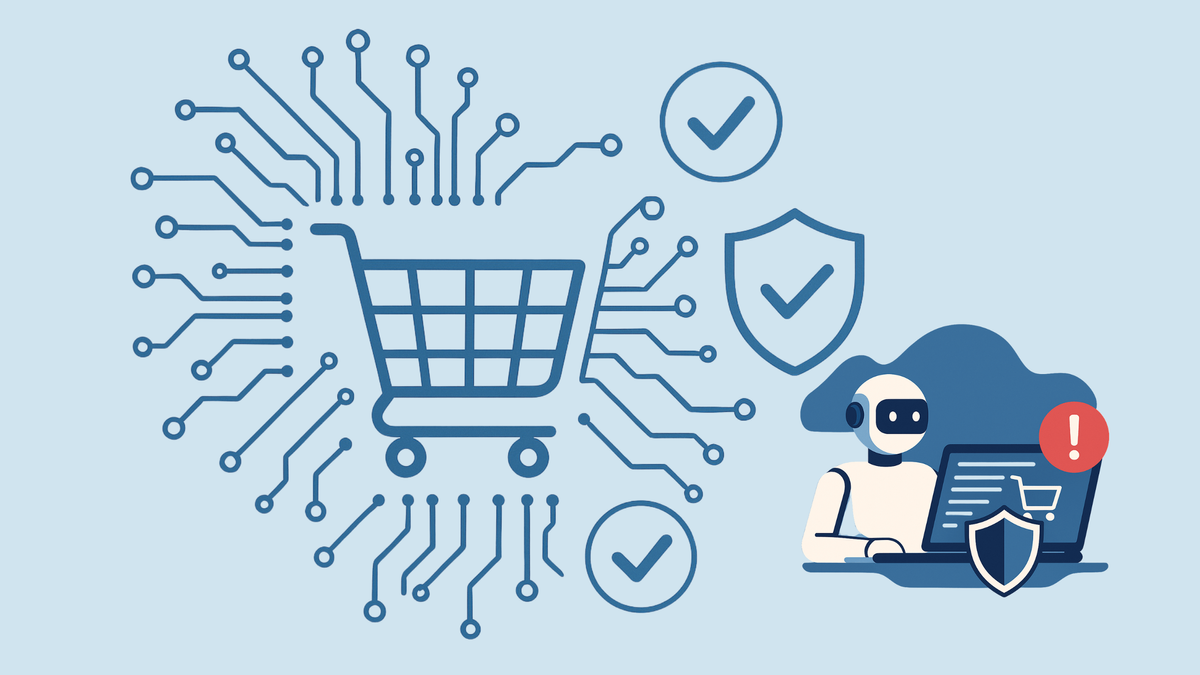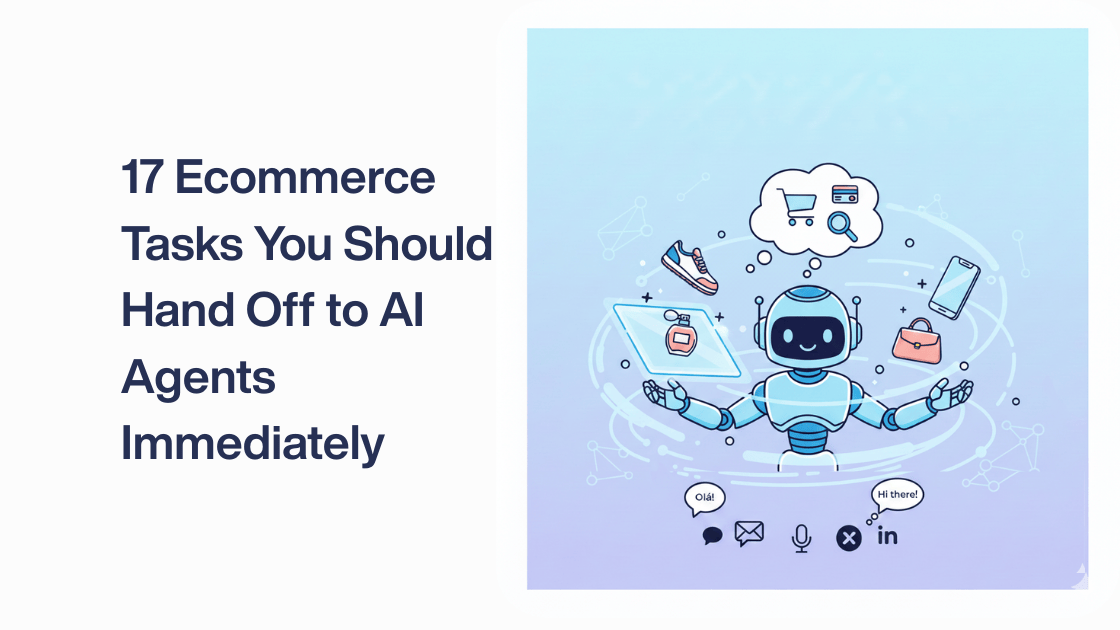The Accuracy Imperative: Hallucination-Free AI for Ecommerce and Future-Ready Businesses
AI hallucinations cost ecommerce businesses billions and erode shopper trust. Discover why accuracy-first AI from multi-layered validation to real-time verification is the foundation for boosting conversions, reducing support costs, and building lasting customer loyalty.

The digital commerce landscape has reached a critical inflection point. AI hallucinations in e-commerce damage shopper trust and cost businesses $67.4B in 2024 alone (Nova Spivack). In e-commerce, an incorrect return policy response or an inventory misquote can result in lost customers. As artificial intelligence becomes the primary interface between brands and consumers, the difference between accurate and inaccurate AI isn't just technical; it's existential for business success.
What Does Hallucination in AI Chatbots Mean?
In AI systems, "hallucination" refers to the generation of information that appears plausible but is factually incorrect or unsupported by the underlying data. Unlike human errors, these are not misunderstandings; they are fabrications created by the model when it lacks the right information.
In e-commerce chatbots, hallucinations often manifest in ways that directly affect business outcomes:
Promotional Fiction: Quoting non-existent discounts or offers that lead to customer frustration and potential liability.
Inventory Phantoms: Claiming product availability when items are out of stock, or conversely, turning away buyers from available merchandise
Policy Misinformation: Providing fictional shipping terms, return windows, or warranty conditions that conflict with actual business policies
Product Specification Fabrication: AI inventing features, dimensions, or compatibility details that don't exist.
For example, if a shopper asks about shoe size availability and the AI confidently says ‘yes’ when it’s sold out, the customer not only abandons the cart, but they may never return. In fashion e-commerce, hallucinations about sizing or returns can create costly refunds; in electronics, false product compatibility claims can lead to disputes.
The scale of this problem is staggering. For an e-commerce site processing thousands of customer interactions daily, even a low error rate translates to hundreds of potential misinformation incidents.
The impact of AI hallucinations extends far beyond simple customer service mishaps; they strike at the foundation of e-commerce success.
Trust Erosion and Customer Abandonment
Research reveals that 71% of consumers abandon a brand after one bad AI interaction, making hallucinations potentially catastrophic for customer relationships. This isn't merely about immediate sales loss; it's about lifetime customer value destruction.
The conversion impact is immediate and measurable.
- Chatbots can increase conversion rates up to 4X when reliable.
- 72% of shoppers won’t act until they receive information they trust.
- 84% of customers won’t return after a poor experience.
The ripple effect is clear: misinformation leads to cart abandonment, escalations that drive up support costs, and brand damage amplified across reviews and social media. Accuracy is no longer optional—it’s directly tied to conversions and lifetime value.
Regulatory Considerations and Industry Standards
The conversation around AI hallucinations isn’t limited to customer experience—it’s also drawing regulatory and compliance attention.
- Industry regulators, such as the FTC, have highlighted the importance of ensuring AI systems do not mislead consumers.
- The EU AI Act introduces accountability requirements for AI providers and deployers.
- Case law, such as rulings involving AI-generated misinformation in customer service, shows how businesses are increasingly expected to maintain oversight of their AI systems.
The trend is clear: transparency and reliability are becoming both market expectations and compliance priorities.
The Competitive Advantage in E-commerce
While many businesses are still grappling with AI implementation, forward-thinking brands recognize that reliability, not intelligence alone, is the differentiator.
The AI-enabled ecommerce market, valued at $8.65 billion in 2025 and projected to reach $22.6 billion by 2032, rewards accuracy above all else.
Organizations implementing robust anti-hallucination measures report transformative results:
- Higher customer loyalty.
- Reduced support costs through fewer escalations.
- Improved conversion rates by removing friction.
- Brand protection by avoiding misinformation incidents.
From RAG to Multi-Layered Hallucination-Free AI
Traditional Retrieval-Augmented Generation (RAG) grounds AI responses in documents. While a strong step forward, it is not flawless. If retrieval fails or the system misinterprets documents, hallucinations may still occur.
Think of hallucination prevention like airport security—multiple checkpoints reduce the chance of errors slipping through.
That’s why advanced systems, like Alhena AI, go beyond RAG with a multi-layered anti-hallucination architecture:
- Contextual Boundary Controls: Restricting AI to verified business content.
- Response Validation: Automatically checking answers against source material.
- Confidence Scoring: Escalating uncertain responses to human agents.
- Real-Time Verification: Cross-referencing multiple data sources before output.
This design ensures responses are grounded, validated, and aligned with business policies.
How Alhena AI Delivers Hallucination-Free Interactions
At Alhena AI, we’ve made accuracy a design principle:
- Verified Knowledge Sources: Our AI is trained on curated product catalogs, policies, and FAQs to minimize misinformation.
- Agentic Chunking: Enhancing RAG with structured data chunks for more complete and accurate answers.
- Multi-Layer Safeguards: Automated checks that prevent fabricated outputs from reaching customers.
- Domain-Specific Guardrails: E-commerce-focused constraints that keep answers relevant and trustworthy.
- Human-in-the-Loop Oversight: Escalations ensure high-stakes or ambiguous cases get expert review.
Key Metrics to Measure AI Accuracy and Reliability
Organizations implementing anti-hallucination measures should track specific metrics:
- Accuracy Rate: The percentage of AI responses that are factually correct and consistent with verified sources
- Hallucination Detection Rate: How effectively the system identifies and prevents false information from reaching customers
- Customer Satisfaction Scores: Direct feedback from customers about AI interaction quality
- Escalation Rates: The percentage of AI interactions that require human intervention
- Conversion Impact: Changes in purchase behavior following AI interactions
The Future Landscape: AI Safety as Competitive Advantage
As we look at 2025 and beyond, AI safety and reliability will increasingly differentiate successful e-commerce companies from their competitors. By 2025, AI is projected to drive 95% of customer interactions, making reliability not just important but absolutely critical to business success.
The companies that will thrive are those that view anti-hallucination technology not as a defensive measure but as a strategic advantage. When customers have confidence in your AI, they’re more inclined to:
- Engage More Deeply: Confident in the information they receive, customers are more willing to explore products and services
- Convert More Frequently: Reliable information removes barriers to purchase decisions
- Return More Often: Trust builds loyalty, creating long-term customer relationships
- Recommend Your Brand: Positive AI experiences become part of your brand story that customers share
Conclusion: The Accuracy & Reliability Imperative
The age of "good enough" AI is ending. As artificial intelligence becomes more sophisticated and handles increasingly critical customer interactions, the margin for error continues to shrink. Companies that recognize this reality and invest in anti-hallucination technology will gain significant competitive advantages, while those that don't risk becoming cautionary tales.
The choice is clear: embrace AI reliability as a core business strategy, or risk being left behind by competitors who understand that in ecommerce, trust isn't just valuable it's everything. The technology exists today to build AI systems that customers can rely on completely. The question isn't whether your business can afford to invest in anti-hallucination AI; it's whether you can afford not to.
In 2025, accuracy isn't just a feature; it's the foundation of customer trust, competitive advantage, and sustainable growth. At Alhena AI, our AI Shopping Assistant and AI Support Concierge are built on anti-hallucination architecture, helping future-ready businesses turn accuracy into a competitive advantage.
FAQs
What are AI hallucinations in chatbots?
AI hallucinations occur when chatbots generate confident but false or misleading answers that aren’t supported by their data sources.
How can e-commerce brands prevent AI hallucinations?
By grounding AI in verified documents, applying multi-layer validation, using confidence scoring, and maintaining human review in edge cases.
Why will AI reliability be the biggest e-commerce differentiator in 2025?
As AI handles 95% of customer touchpoints, brands that deliver consistent, correct answers will outperform those with inaccurate bots. Trust will be the top loyalty driver.
Why is accuracy in conversational AI critical for customer trust?
Even a single misleading answer can destroy trust, trigger returns, escalate costs, and create long-term reputational harm.
What are the best ways to prevent hallucinations in retail AI systems?
Prevention strategies include grounding AI in verified data, using multi-layered validation, applying confidence scoring, and integrating human-in-the-loop oversight for edge cases.


